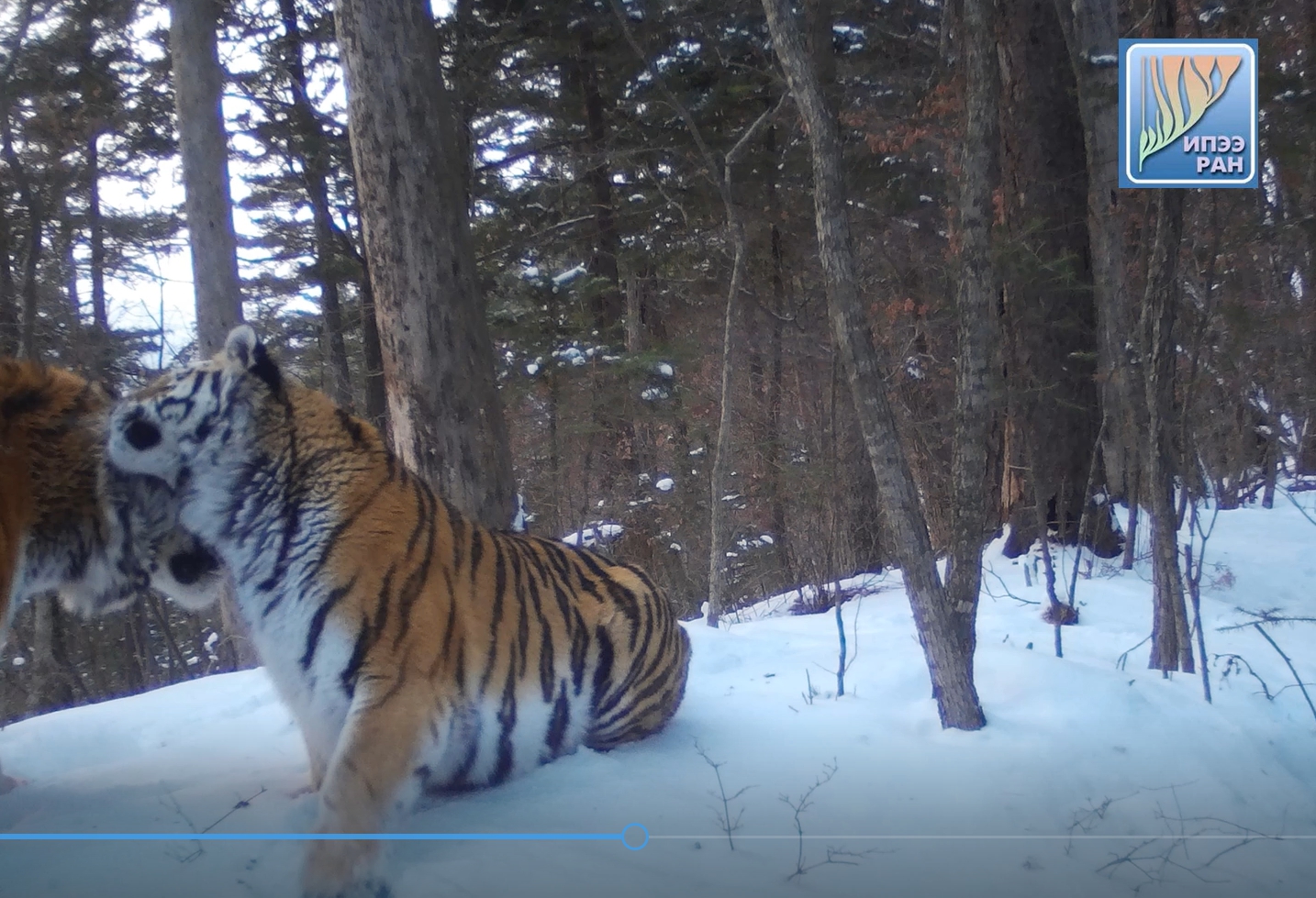
During the implementation of the program "Study of the Amur tiger in the Far East of Russia" within the framework of the "Permanent Expedition of the Russian Academy of Sciences to study the animals of the Red Book of the Russian Federation and other especially important animals of the fauna of Russia", the staff of IEE RAS carried out work in the Ussuriysky Reserve (NP "Land of the Leopard") in the south of Primorsky Krai.
At the end of April 2022, camera traps that had been set up in the forest three months ago were taken down to collect footage. Data from 70 camera traps have been obtained, which will allow the Institute staff to estimate the number of tigers living in the reserve, their population density, and the abundance of their potential prey. This was the first count after the decline in the number of wild boar (the main prey of the tiger) as a result of the epizootic of African swine fever. And it was all the more joyful to note that tigers are not only present on the territory of the reserve, but, apparently, there will be more of them by the summer. The IEE RAS staff obtained unique footage of the courtship of a pair of tigers in late February, which allows us to expect the birth of offspring as early as early June 2022. We hope that next winter they will become the heroes of our photo reports.
Sergei Naidenko, Director of IEE RAS, spoke about the ongoing work on monitoring the Amur tiger: “A matrix of camera traps has been installed in the Ussuriysky Reserve and its environs according to a certain scheme, which has not changed for many years. The cameras operate for 2 - 2.5 months in the winter-spring period. Cameras capture the presence of the tiger, and each individual is identified by the unique pattern of stripes on the skin of the animal. At each of the 35 control points, the cameras are opposite each other, which allows to take photos of the tiger from different sides and accurately identify it. Based on the frequency of meetings of individually identified animals in certain geographical points, a model is being built that allows us to estimate the density of tiger groups throughout the reserve and in the immediate vicinity, which can then be used to estimate their numbers.”
Materials on the topic:
N+1: "Camera trap captures courtship of Amur tigers in Ussuriysky Reserve"
